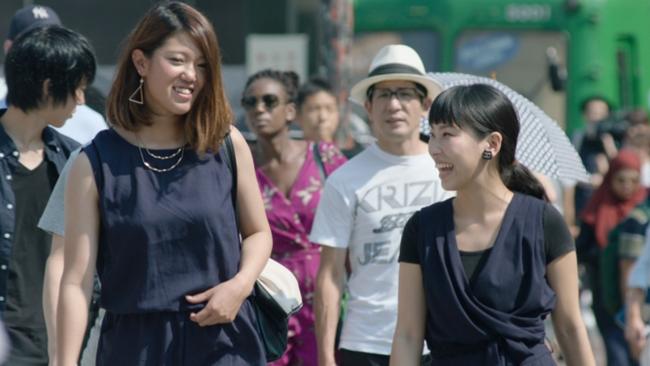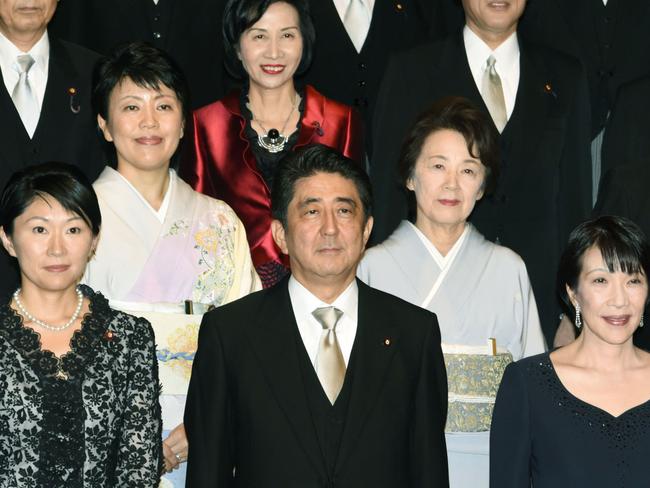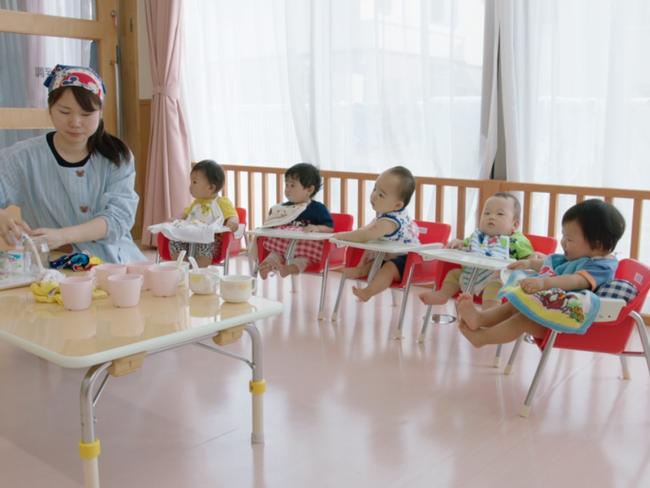The cure for Japan’s failing economy
JAPAN is notorious for a brutal corporate culture where people literally work themselves to death, yet the economy is in free fall. Here’s the PM’s radical solution.

JAPAN is notorious for a brutal corporate culture where people literally work themselves to death.
Hundreds of burnt-out workers succumb to heart attack, stroke or suicide each year, a phenomenon known as karoshi, yet the economy is in free fall, struggling with declining productivity and an ageing population.
So Prime Minister Shinzo Abe has come up with radical solution, known as “womenomics”: meaning getting more women into the workforce, and keeping them there.
Sixty per cent of female workers in Japan quit their jobs after they have their first child.
Most companies don’t offer the flexible hours parents often require and, in some ways a traditional society, women are usually solely responsible for childcare. With overtime stretching into the night and weekends, most mothers see leaving work as their only option.
But desperate times call for desperate measures, and Japan would rather have more female workers than turn to migrant workers. Mr Abe has announced ambitious targets, saying he wants 400,000 more childcare places by 2018 and women to hold 30 per cent of leadership positions in the corporate and political sectors by 2020.
Al Jazeera’s 101 East this Friday will explore whether Japan can really conquer its gender gap to save the country’s economy. “Japanese women are among the most high-qualified but under-utilised resource in the developed world,” reporter Yaara Bou Melhem told news.com.au. “A third of them want to be housewives, because it’s a conservative society and if they’re working, they have to do all the chores, raise the children and be these super women.
“The government is pushing for women to enter the workforce and get higher, but it hasn’t yet broken down the barriers.”

TAKING BREAKS
The first challenge is changing the conformist mentality in Japanese businesses, one that is not only sexist but inefficient and bureaucratic. In January, the government submitted legislation making it employers’ responsibility to ensure staff used their holiday.
Until now, taking your full quota of annual leave has been seen as weak and lazy. Eriko Sekiguchi used just eight of her 20 days of annual leave last year, six of them for being sick.
“Nobody else uses their vacation days,” said the 36-year-old, who works 14-hour days for a major trading company, and worries she will never find a partner if she stays in her job.
Barely half the holiday days allotted to Japanese workers are ever used, with individuals taking an average of nine days per person, per year.
Employees have to use their leave to cover sick days, so many save it up for fear of getting ill. “working in Japan involves quite a lot of a volunteer spirit,” said Health and Labor Ministry official Yuu Wakebe, who completes around 100 hours of overtime a month and took five days off last year.

PICKING UP THE KIDS
Working free “service overtime” (sah-bee-soo zahn-gyo), is expected. Younger workers feel uncomfortable going home before their bosses and “salarymen” or “OL” (office ladies) routinely stay late.
In a video called ‘A week in the life of a Tokyo salary man’ recently posted online, a British expat documented a typical 80-hour week during the peak months at his financial services company — 13-hour days for six days a week, leaving the office after 11pm every night.
Government figures from 2013 revealed that 22 per cent of fulltime employees worked more than 49 hours a week, while around 4.74 million exceeded 80 hours monthly overtime, one of the criteria used in determining whether a death can be attributed to overwork.
In November, a restaurant chain was ordered to pay $A620,000 to the family of a worker who took his own life after working around 190 hours of monthly overtime leading up to his death.
“The corporate environment is quite punishing, and it’s male-dominated,” said Melhem. “Most people work late into the evening and it’s not flexible to pick up kids. The other challenge is access to childcare. Waiting lists are long and mothers don’t have access to it.”
But with the industry being deregulated and private licences allowed, and men slowly taking more responsibility for childcare, that could be changing.

GETTING THE PUSH
The final barrier for women is matahara, which is when women are pushed out of their jobs because they are pregnant.
“They’re discouraged from staying,” said Melhem. “They’re told by their employer and even HR they shouldn’t be there. One woman told us she was asked, ‘If your husband can’t be the breadwinner, why did he get you pregnant?’”
Matahara only became illegal in the past year, following a high-profile court case.
The government is now encouraging firms to offer flexible hours or part-time arrangements for women who have to care for children or elderly parents. Companies are starting understand benefits of encouraging a shift in gender roles, and to bring in progressive policies to make it work.
Automotive firm Mishimoto has introduced a corporate program to attract more female civil engineers, for example.

GLASS CEILING
Some have sounded a note of caution, however, with The Japan Times saying last November that the new annual leave rule was “largely symbolic” and the government needed to impose “work-hour regulations or penalties on businesses that have employees work excessive hours.”
Japan’s first female mayor, elected six years ago, said she thought the 30 per cent leadership target in five years was unrealistic, and it was more likely to be ten. She said the glass ceiling remained, but that while women would “feel the wind blowing” as they climbed the ladder, it would cease once they reached the top.
This is new territory in an old-fashioned culture, where the most recognisable image of womanhood is the geisha or the cute kawaii pop idol. It will require major change to a perfectionist society that is reluctant to do away with tradition, despite being one of the world’s most advanced.
But in the past few years, the country has finally come to a consensus that the impact of “Japan Inc” on health, social life and productivity has become unmanageable.
Now the world’s third-biggest economy is being forced into making the working world more open. That could mean dramatic change in every aspect of life.
101 East: Japan’s Womenomics airs this Friday at 7.30pm on Al Jazeera.



